 Garden Ways
Garden Ways
Joy of Gardening

Garden Ways
Joy of Gardening
by Dick Raymond

The mission of Storey Publishing is to serve our customers by
publishing practical information that encourages
personal independence in harmony with the environment.
Photography: Paul Boisvert, George Robinson, Charles Cook, Erik Borg, Mark Hebert,
George Thabault, and the W. Atlee Burpee Seed Company (pages ).
Illustrations: Elayne Sears
1982 by Garden Way Inc.
All rights reserved. No part of this book may be reproduced without permission in writing from the publisher, except by a reviewer who may quote brief passages or reproduce illustrations in a review with appropriate credit; nor may any part of this book be reproduced, stored in a retrieval system, or transmitted in any form or by any means electronic, mechanical, photocopying, recording, or other without permission in writing from the publisher.
Library of Congress Cataloging-in-Publication Data
Raymond, Dick.
Garden Ways joy of gardening.
Includes index.
ISBN 978-0-88266-319-7
I. Vegetable gardening. I. Sears, Elayne.
II. Boisvert, Paul. III. Garden Way Publishing.
IV. Title. V. Title: Joy of Gardening.
SB321.R337 1983 635 82-12075

Contents

FARM WORK built the foundation for Dick Raymonds knowledge of the soil. I just wheel-harrowed my garden, said Dick of this June, 1955 snapshot at age 24. That garden and roadside stand paid for my first home. He told me: I always loved to drive a tractor. You could do so much work, with so little effort! His worksaving gardening techniques seemed to be based on just that idea.
I met Dick Raymond,
naturally enough, on his knees in a garden, his hands in the soil, and mumbling to himself. He was convinced there was a way to grow sweet potatoes up north, even though it was supposed to be crazy just to try.
Theyre real long-growing, actually tropical vegetables, Dick said. They love the heat. Well, I tell you, fellow, when it comes to gardening, I love a challenge!
That was back in 1966, when Dick joined up with Garden Way. And sure enough, within a few years, Dick Raymond had not only grown a bountiful, fully ripened crop of sweet potatoes in northern Vermont, but developed a whole new technique of raised beds.
Dick will often explain to gardeners, eager for his advice, that raised beds keep those tender, finicky vegetables from getting their feet wet. He says elevating plants solves a host of problems all at once: helping slow-drying spring soil to drain excess moisture faster keeping plant roots 5 to 10 degrees warmer than beds on the level, which tomatoes, melons and peppers really appreciate creating an extra half-foot or so of finely textured topsoil so that root crops have all the shoulder room they need to grow big and healthy.
Plants are like people, Ive often heard Dick say, in one of his classes, or to visitors to his beautiful test gardens. They catch cold. They windburn and sunburn. I often lick some tricky garden problems just by putting myself in their place.

IN THE EARLY 70s the U.S.I.A. (the United States Information Agency) made a film called FOOD: Will There Be Enough?, to bring the best of American know-how to developing countries. They sought out individuals who were helping themselves, said Dick. I was real flattered to be asked to demonstrate my methods in the film.
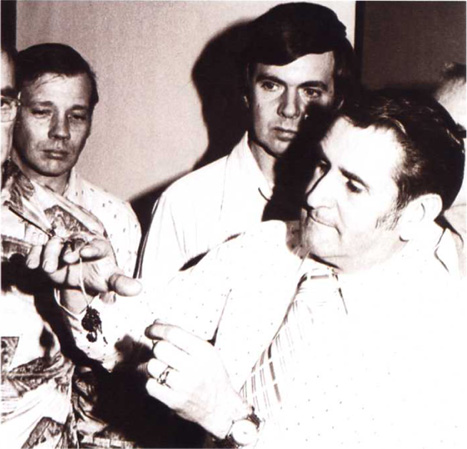
HERES DICK IN 1974 during a break in one of his gardening classes. Hes explaining one of his favorite techniques how to transplant a tomato seedling so as to bury most all the stem, in order to encourage the strongest possible network of roots.
Take carrots, for example. They need sandy, loose soil. Or at least soil thats spongy with lots of organic matter. Well, most gardeners have heavy, compacted clay to start with! Ive found carrots really thrive to a juiciness you wouldnt believe in my adaptation of raised beds.
And this is just one of the many exciting, new techniques Dick has developed.
How is it that this man, a former dairy farmer and cattle dealer, has come to know as much about growing spectacular vegetables as anyone you could ever hope to meet?
He has not been an overnight sensation, thats for sure. Its taken Dick Raymond 40-plus years of hands-in-earth trial and error, and a pure love of gardening. His practical bent of mind dates back to his early life in rural Vermont during the Depression days. Every family gardened to keep food on the table, simple as that, Dick says of his growing up, and I always had my share of work in the garden. As the youngest of nine children, Dick worked side by side with older folks, and pestered them for information. Ive spent a fair amount of time with farmers, too, Dick told me. Farmers are very smart people. They have to make do with what theyve got. I dont care how much money they have, farmers must be practical. I didnt get much of what Ive learned from the library. I got it from shrewd individuals.
For years before I met him, Dick and his wife Jan grew all the food for their young family, and made some extra cash from a oneacre market garden. This is when he devised methods for raising the earliest, sweetest corn, the plumpest, juiciest tomatoes, up to four weeks ahead of other growers in the area.
Ive never been satisfied with ordinary results, or shrugging at apples full of worms, or always doing battle with cabbage moths. I figure theres got to be an easier way, and a perfectly safe way too, if we just use our heads.
I can vouch for Dicks being an incurable tinkerer. Hes constantly trying to stretch the gardening season, or honing his fishing and hunting skills (which are already razor-sharp), or getting his chores done a little faster and more effectively.
The truth is, Dick Raymond was hired as a caretaker and handyman back in 1966 by Lyman Wood, one of Garden Ways founders. In those days Lyman was running our only tiller test gardens, at his place in Charlotte, Vermont. Needless to say, it didnt take long for him to realize that Dick was a dirt genius when it came to farm tools and novel garden ideas.
At the time, I was just starting out as sales manager for Garden Ways Troy-Bilt tiller factory in Troy, New York. So I visited our Vermont gardens regularly. What do you think of our tillers? was my first question to Dick.

Next page

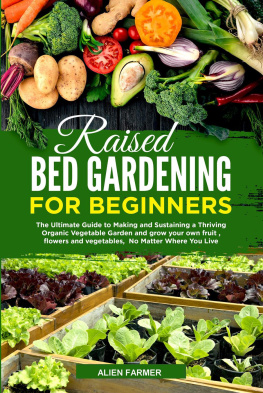
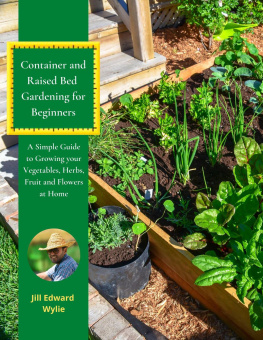
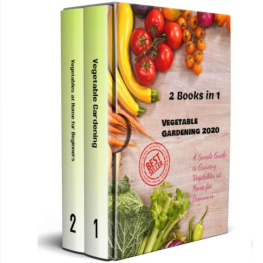
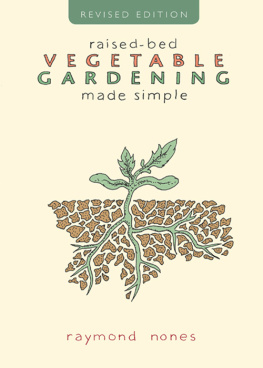
 Garden Ways
Garden Ways





